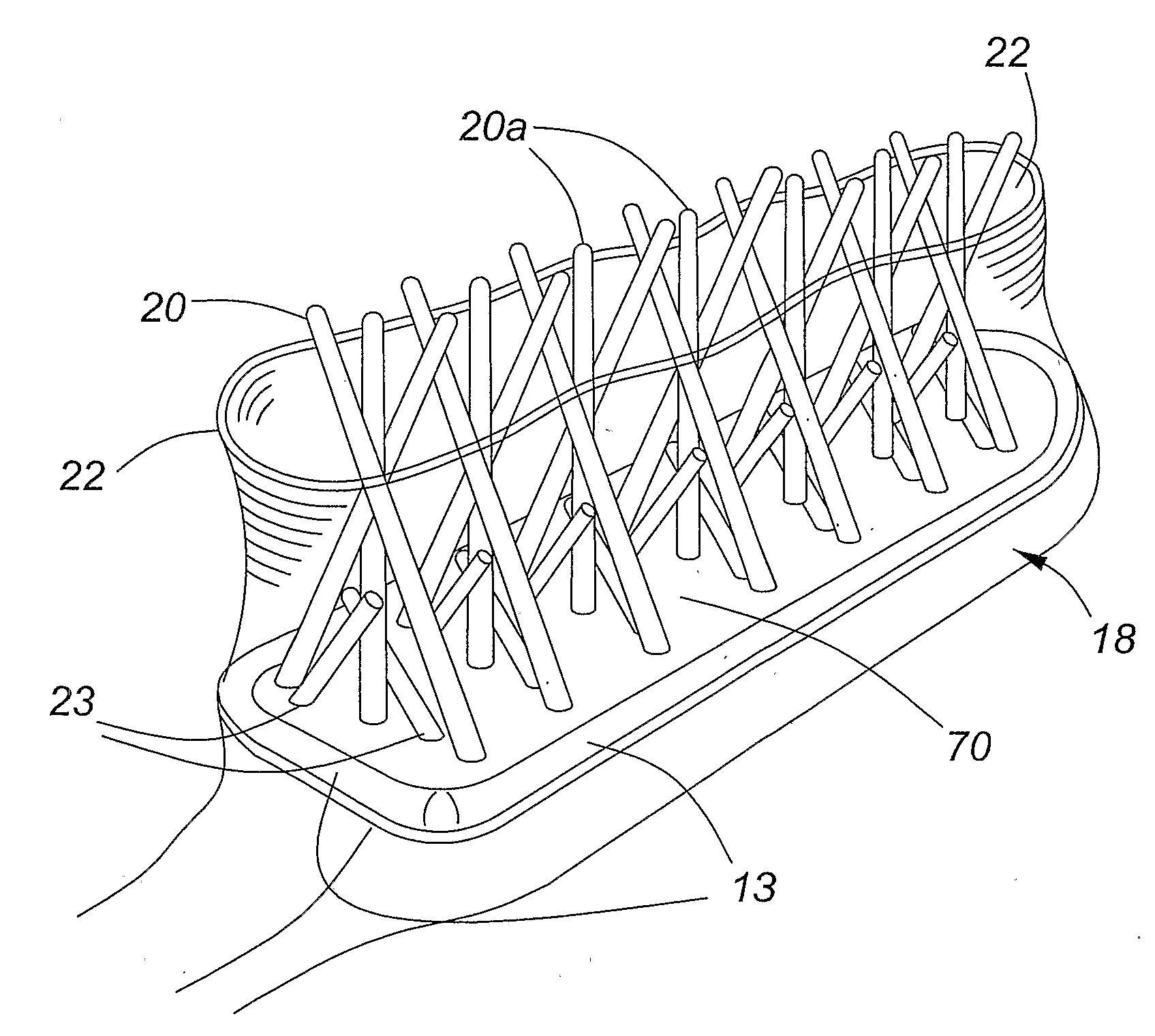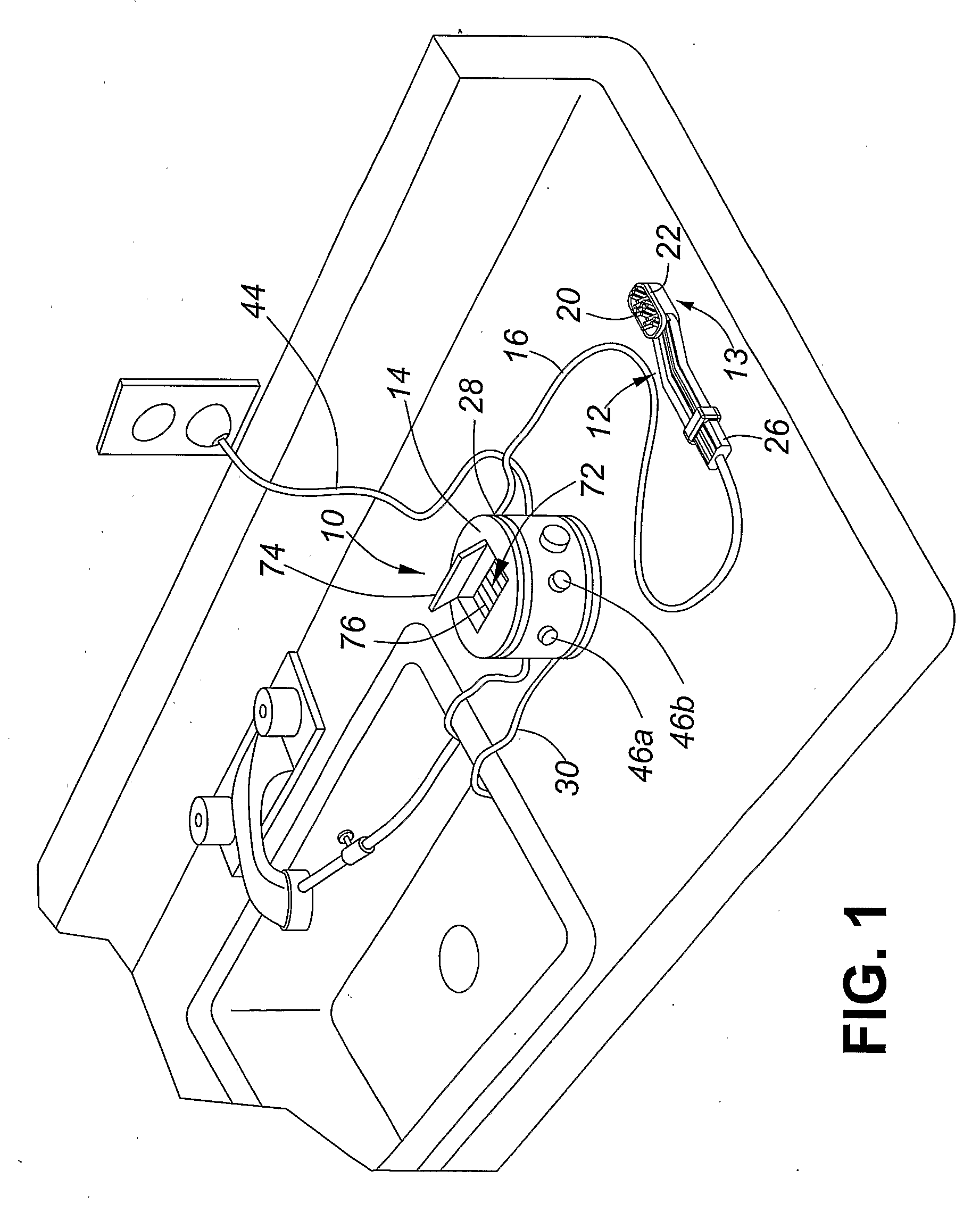Ultrasonic Toothbrush With Irrigation and Vacuum
a vacuum and ultrasonic technology, applied in the field of ultrasonic toothbrushes, can solve the problems of reducing the use of toothpaste in the privacy of one's home, affecting the health of patients, and unable to effectively remove hidden debris such as plaque and tartar between the teeth, so as to reduce the disadvantages or eliminate the
- Summary
- Abstract
- Description
- Claims
- Application Information
AI Technical Summary
Benefits of technology
Problems solved by technology
Method used
Image
Examples
Embodiment Construction
[0028]Referring to FIG. 1, a toothbrush apparatus 10 comprises a powered toothbrush head 12 detachably connected to a supply unit 14 by an umbilical cord 16. A bristle portion 13 of head 12 has a compartment 18 comprising bristles 20 projecting from a pad 70 and surrounded by a skirt 22, these parts being shown in detail in FIGS. 2, 2A and 3. The skirt 22 is made of flexible material such as rubber-like polyurethane material of appropriate flexibility such as will conform to hard and soft tissues of teeth and gums and yet not be distorted substantially by pressure forces caused by suction, as will be described. The surface of the skirt is minimally absorbent so that sanitation can be readily achieved by the UV sanitation system (to be described) between brushings. As seen in FIG. 2A, the skirt 22 has a length (height above the pad 70) such as to enclose the major length of the bristles, preferably at least 75%, but more preferably at least 85% of that length, but is slightly shorter...
PUM
 Login to View More
Login to View More Abstract
Description
Claims
Application Information
 Login to View More
Login to View More - R&D
- Intellectual Property
- Life Sciences
- Materials
- Tech Scout
- Unparalleled Data Quality
- Higher Quality Content
- 60% Fewer Hallucinations
Browse by: Latest US Patents, China's latest patents, Technical Efficacy Thesaurus, Application Domain, Technology Topic, Popular Technical Reports.
© 2025 PatSnap. All rights reserved.Legal|Privacy policy|Modern Slavery Act Transparency Statement|Sitemap|About US| Contact US: help@patsnap.com



